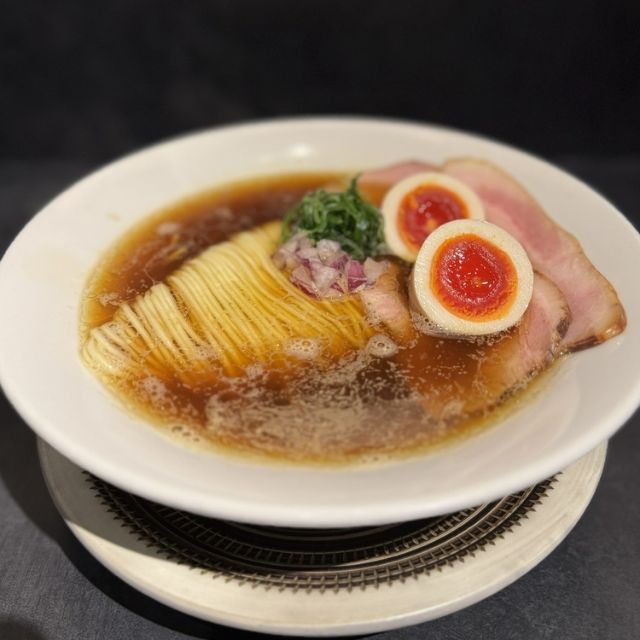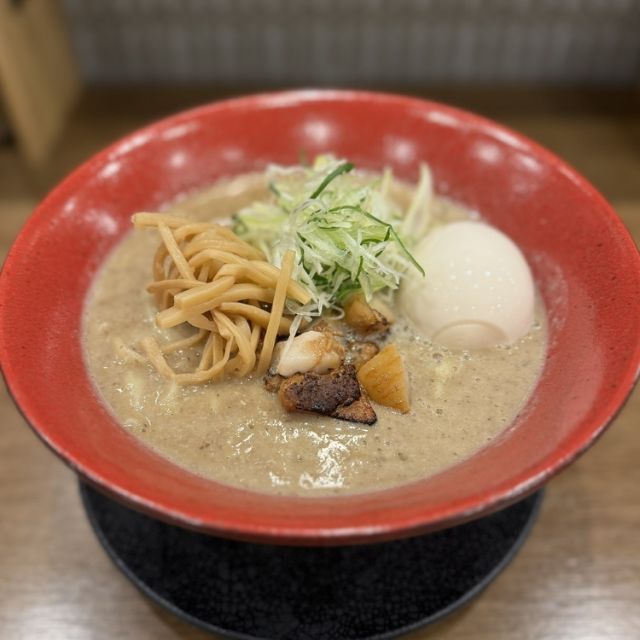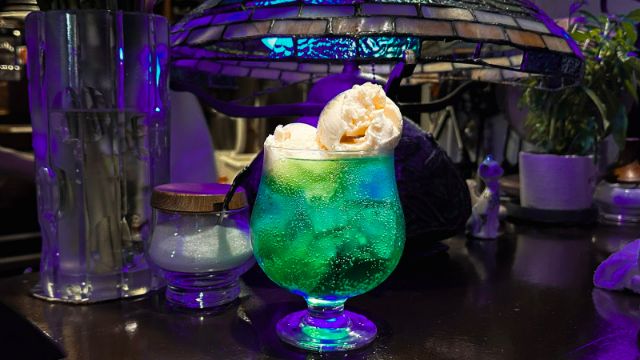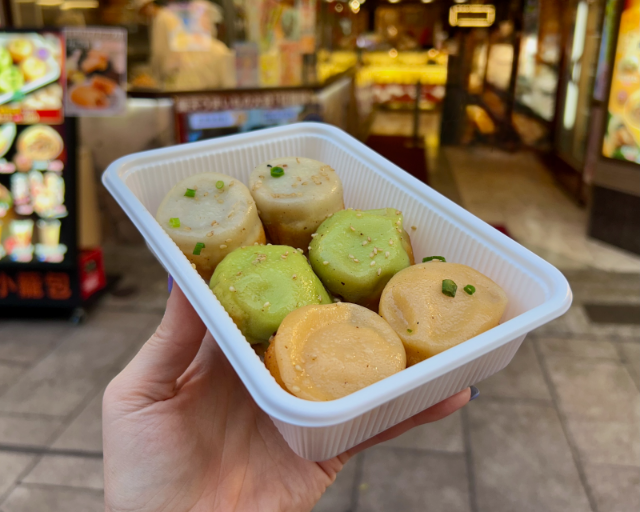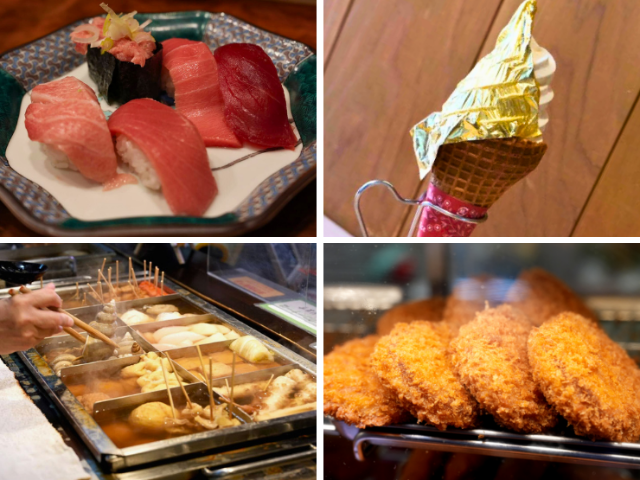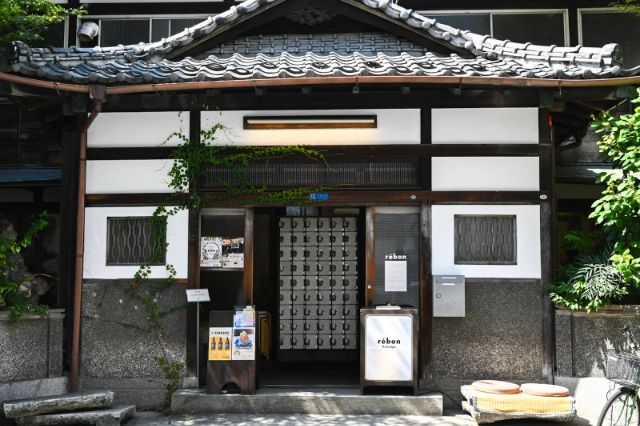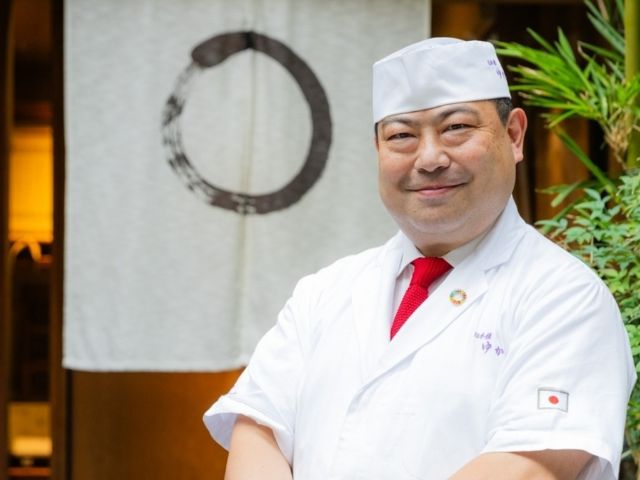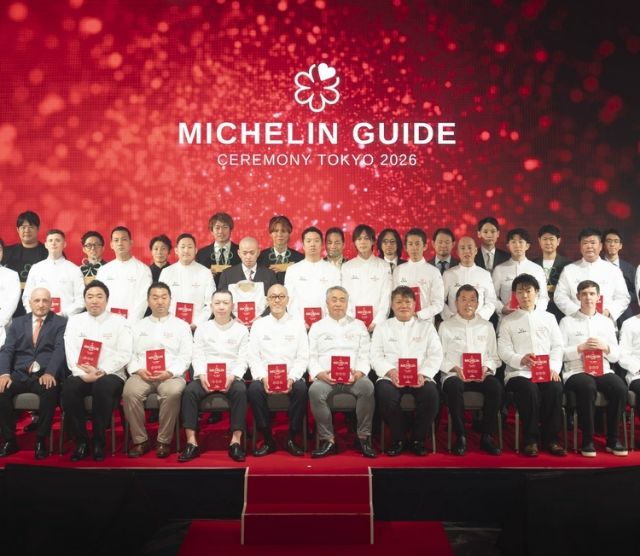The Best Ramen and Tsukemen In Shinjuku
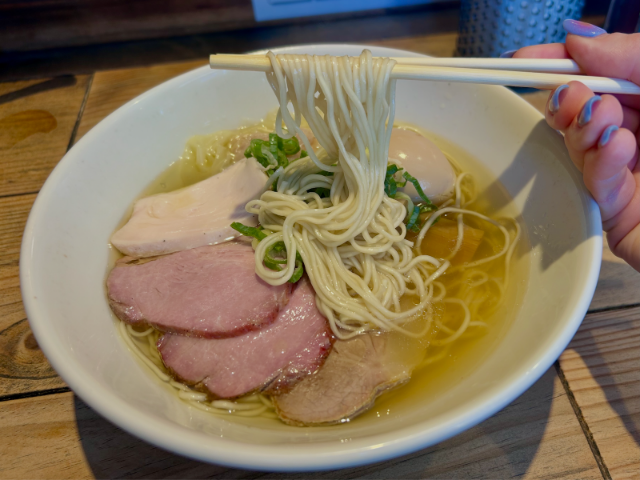
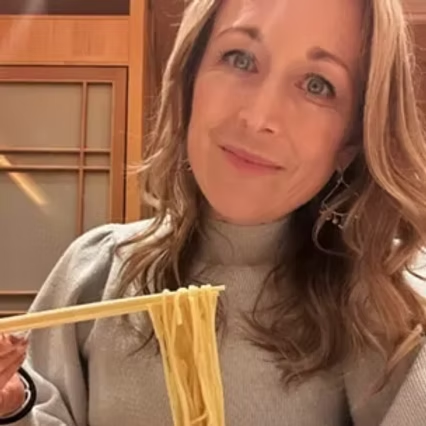
Menya Sho Honten 麺屋翔 本店(shio ramen)
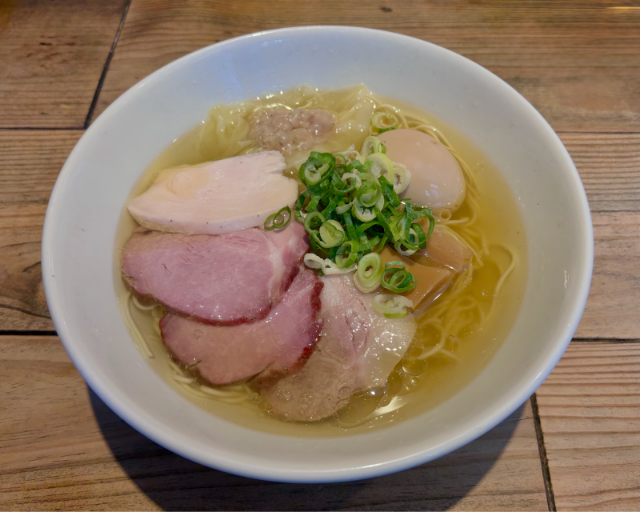
They use four different types of salt in their famous chicken shio (salt broth) ramen. Each salt has different flavors, from smoky to mineral notes, and adds layers of complexity to the soup. Such a recipe produces an equally complex ramen—don’t let anyone tell you that clear-based soups are boring! Menya Sho also uses shamo chicken, a Japanese breed known for its meaty flesh and a full-bodied flavor. It’s a more expensive meat than standard boiler chicken, but Menya Sho keeps their ramen reasonably priced at only ¥1,000 for their house bowl, which includes two slices of pork, two bamboo shoots, and freshly sliced green onions from Kujo, Kyoto.
For an upgrade, you should order the specialty bowl which includes additional slices of their homemade pork and chicken, as well as two wontons—one shrimp and one pork. When your ramen arrives, take a moment to appreciate the luscious golden layer of chiyu (chicken oil) and the aroma of carefully simmered chicken bones before digging in.
I recommend ordering the specialty bowl with all the toppings for ¥1,500. The meat is excellent, with thin slices of smoky braised pork belly, tender sous vide chicken, and braised pork shoulder butt. The egg is marinated in a deep soy sauce tare (seasoning mix) with a vivid orange yolk. Also, there are only 140 grams of the firm, thin noodles in this ramen, which is a reasonable portion size that won’t weigh you down. Overall, it’s a very well-rounded bowl for anyone who loves chicken and is looking for top-tier ramen in Shinjuku.
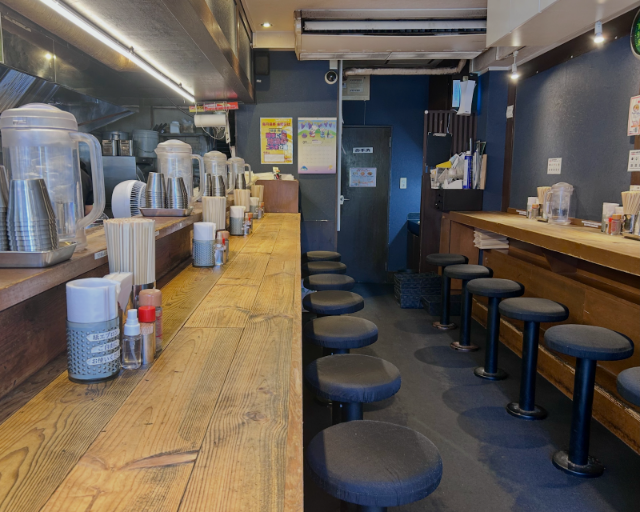
Open Hours: Weekdays 11:00-15:00 and 18:00-22:00; Saturday 11:00-15:00 and 17:00-22:00; Sunday 11:00-15:00 and 17:00-21:00.
Address: 7-22-34 Nishi-Shinjuku, Shinjuku-ku, Tokyo
Regular Holiday: None
Inose Ramen(tsukemen)

The house soup, on the left, uses a white soy sauce and seafood combination, while the “Tokyo classic” soup on the far right is a deep and dark soy sauce combined with vinegar and chili pepper. Its strong tanginess really stands out next to the aromatic white soy. The “chilled soy milk dandan” uses sesame paste, chili oil, and miso marinated minced pork. The creaminess makes this one a fan favorite! And the “nameko oroshi” uses grated spicy daikon, myoga ginger, and nameko mushrooms. I like to add a little of the soup wari hot dashi served on the counter to the nameko oroshi and have almost a fifth soup!
The thinly sliced pork is wrapped into a gorgeous rose atop the silky noodles. Each slice (and there are four massive pieces!) is delicately and tender. Experiment with dipping the pork into the different soups!
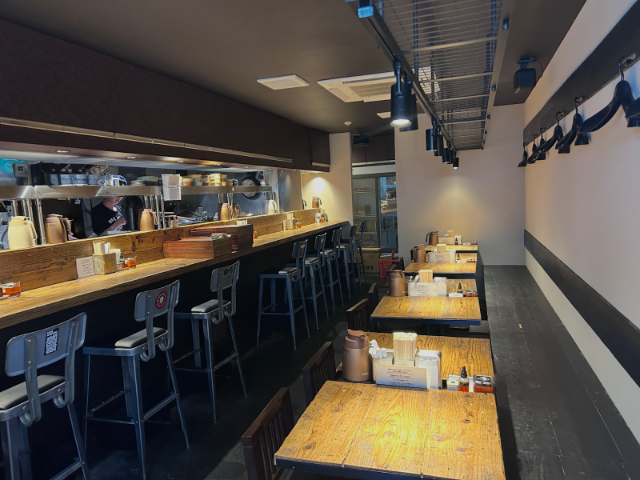
Open Hours: 11:00-15:00 and 17:30-21:00
Address: Shinjuku Toyo Building 102, 2-20-19 Yoyogi, Shibuya-ku, Tokyo
Regular Holiday: None
Menya Kaijin Shinjuku Ten(fish-based ramen)
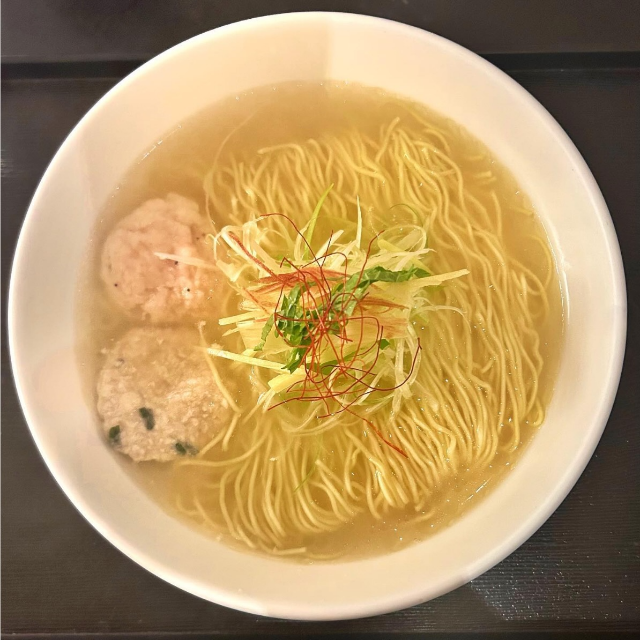
Fresh fish bones are sourced daily, flame-seared to bring out their depth, then gently simmered into a refined, aromatic soup. The noodles are very thin and slightly firm, perfectly complementing the light broth. Since no pork is used, this ramen is also suitable for those with dietary restrictions.
The presentation is almost too pretty to eat, with a shrimp-and-cod meatball and a juicy chicken meatball, topped with spring onions, myoga ginger, shiso leaves, and chili threads. Overall, Menya Kaijin is an excellent choice for anyone trying fish ramen for the first time, or for seasoned ramen lovers looking for something refreshingly different.
Open Hours: Monday–Friday, 11:00-15:00 and 16:30-23:30; Saturday, 11:00-23:30; Sunday, 11:00-23:00
Address: Sanraku Building 2F, 3-35-7 Shinjuku, Shinjuku-ku , Tokyo
Regular Holiday: None
Tsukemen Gonokami Seisakusho Shinjuku(tsukemen)
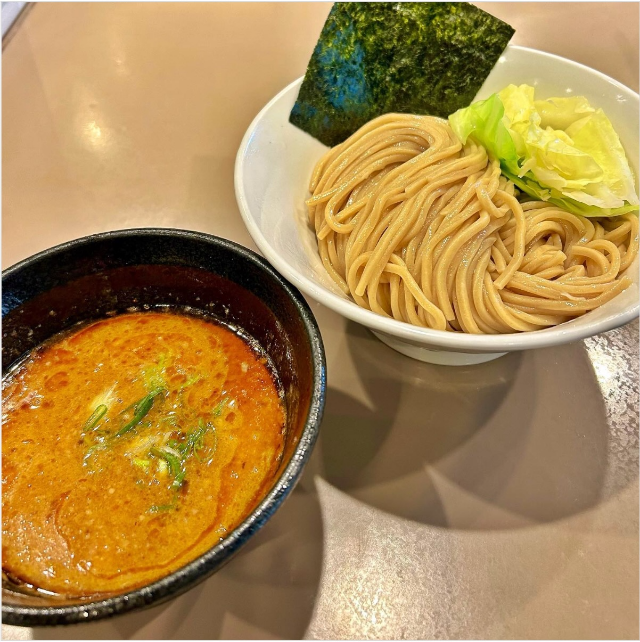
For example, the stock uses hundreds of pounds of leftover shrimp shells, which results in a creamy explosion of shrimp flavor. The noodles are homemade and use a lot of wheat, making them both healthy and delightfully textured. The sweetness of the cabbage serves as a nice contrast to the shrimp, and you can even order a side of basil pesto to create a new flavor fusion as you eat!
You can choose your portion of noodles when you order, and the sizes range from small (180 grams), medium (270 grams), and large (360 grams). I recommend the small or medium, as it is quite filling! Tsukemen Gonokami Seisakusho is open from 11:00am to 9:00pm every day, and lunchtime is definitely the most crowded. It’s best to go in the mid-afternoon to minimize your wait. But regardless of whether you have to line up, this ramen is worth it!
Open Hours: 11:00-21:30
Address: Chateau Shinjuku Gyoen Daiichi 1F , 5-33-16 Sendagaya, Shibuya-ku, Tokyo
Regular Holiday: None
Afuri Karakurenai Shinjuku Subnade(spicy ramen)
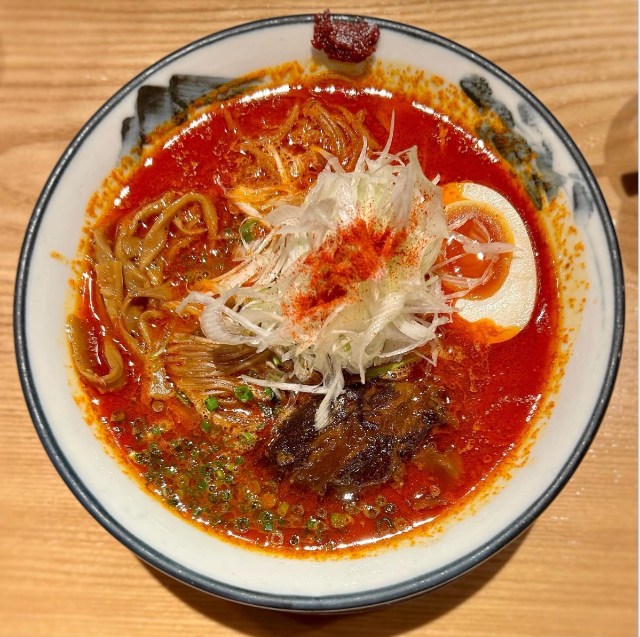
Their ramen is offered on a spice scale from zero to eight, resulting in more and more red pepper on an already spicy miso base. It is a complex blend of chili oil, pepper puree, doubanjiang, fresh black pepper, and Szechuan. The soup uses salt, yuzu, and chicken which helps temper the intensity of the spice levels and the heaviness of the miso. Overall, it’s a very well-rounded bowl of ramen and a fun chance to test your limits. For the true spice lover in your life, challenge them to try the “level 28”, which even uses ghost pepper. The day that I went, I tried level 5 out of 8 and was surprised at how spicy—and delicious—it was!
For those who prefer something milder, Afuri Karakurenai also offers non-spicy options, including the standout “Rainbow Vegan Ramen.” Made with sun-dried tomatoes and shiitake mushrooms for depth, it’s a vibrant, vegetable-forward option and a must-try for anyone seeking vegan ramen in Shinjuku.
Open Hours: 10:30-22:00
Address: Shinjuku Subnade B1F, Section 005, Kabukicho 1 Yasukuni-dori, Shinjuku-ku, Tokyo
Regular Holiday: None
You May Also Like
BEEF KITCHEN STAND APA Hotel Kabukicho Tower Branch
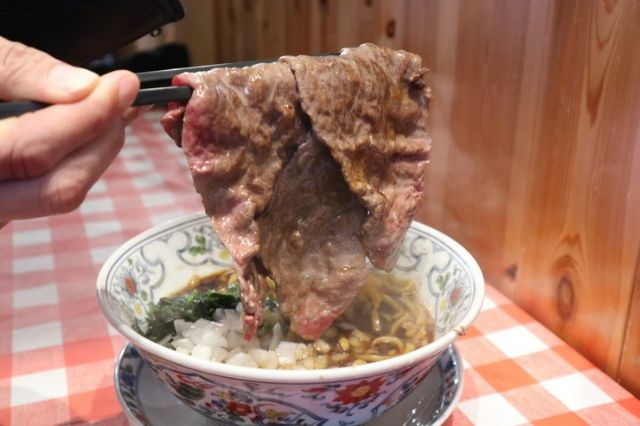
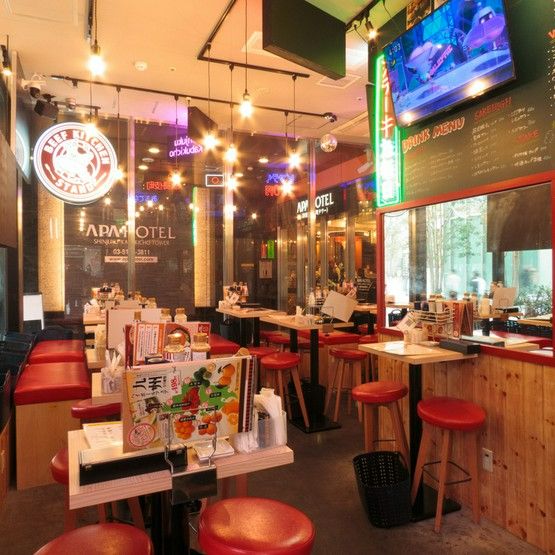
BEEF KITCHEN STAND APA Hotel Kabukicho Tower Branch
Closed: None
Average price: [Dinner] 3,000 JPY / [Lunch] 1,500 JPY
Access: 2-minute walk from the front exit of Seibu Shinjuku Station. Next to Tokyu Kabukicho Tower, 1st floor of APA Hotel Shinjuku Kabukicho Tower.
Address: 1F, APA Hotel Shinjuku Kabukicho Tower, 1-20-2, Kabuki-cho, Shinjuku-ku, Tokyo Map
More Details Reservation
Disclaimer: All information is accurate at time of publication.
Thank you for reading our article.
Our goal is to take your culinary journey to the next level by helping you find the best restaurant. With SAVOR JAPAN, you can search and make reservations for
the Ramen restaurants found in and around Tokyo and Shinjuku that fill your needs.
Discover more Ramen restaurants by area
- Tokyo Area
- Near Tokyo
- Kyoto and Osaka Area
- Hokkaido Area
- Northern Honshu (Tohoku)
- Central Honshu (Chubu)
- Western Honshu (Chugoku)
- Shikoku
- Kyushu
- Okinawa and Ryukyu Islands
Discover more restaurants to eat Ramen (Noodles) Cuisine by area
Related Articles
New Articles
Categories
Cuisine
- Bars (22)
-
Japanese Cuisine (664)
- Kaiseki (44)
- Nabe (19)
- Okonomiyaki (21)
- Shabu Shabu (36)
- Soba (16)
- Sushi (134)
- Tempura (18)
- Teppanyaki (44)
- Shojin Ryori (2)
- Tonkatsu (10)
- Kushiyaki (10)
- Yakitori (43)
- Sukiyaki (34)
- Japanese Cuisine (341)
- Oyster (2)
- Sashimi/ Seafood (19)
- Unagi (eel) (30)
- Motsu Nabe (offal hotpot) (6)
- Mizutaki (chicken hot pot) (3)
- Oden (6)
- Kaisendon (seafood bowl) (8)
- Udon (2)
- Taverns(Izakaya) Cuisine (118)
- Western Cuisine (41)
- Italian/French Cuisine (93)
- Yakiniku/Steak (221)
- Chinese Cuisine (25)
- Ramen (Noodles) Cuisine (25)
- Cafe/Sweets (59)
- Other Asian Cuisine (5)
- Global/International Cuisine (7)
- Alcohol (45)
- Other (10)
Area
- Shikoku (10)
- Kyoto and Osaka (343)
-
Tokyo (452)
- Tokyo (281)
- Ginza (42)
- Roppongi (22)
- Shibuya (23)
- Shinjuku (46)
- Asakusa (20)
- Ebisu (11)
- Tsukiji (10)
- Tokyo Landmarks (4)
- Ueno (23)
- Akihabara (8)
- Ikebukuro (12)
- Jiyugaoka, Denenchofu, Nakameguro (9)
- Shimokitazawa (4)
- Kichijoji (3)
- Tachikawa (1)
- Omotesando, Harajuku, Aoyama (17)
- Akabane (1)
- Kagurazaka (4)
- Akasaka (10)
- Odaiba (1)
- Tsukishima, Harumi, Toyosu (3)
- Near Tokyo (100)
- Okinawa and Ryukyu Islands (58)
- Hokkaido (123)
- Northern Honshu (Tohoku) (31)
- Central Honshu (Chubu) (142)
- Western Honshu (Chugoku) (32)
- Kyushu (92)
Archives
- November 2025(1)
- October 2025(3)
- September 2025(6)
- August 2025(11)
- July 2025(19)
- June 2025(18)
- May 2025(34)
- April 2025(43)
- March 2025(30)
- February 2025(35)
- January 2025(26)
- December 2024(69)
- November 2024(31)
- October 2024(15)
- September 2024(39)
- August 2024(65)
- July 2024(31)
- June 2024(53)
- May 2024(61)
- April 2024(28)
- March 2024(31)
- February 2024(42)
- January 2024(32)
- December 2023(20)
- November 2023(5)
- October 2023(11)
- September 2023(6)
- August 2023(18)
- July 2023(8)
- June 2023(8)
- May 2023(18)
- April 2023(15)
- March 2023(1)
- January 2023(1)
- April 2022(2)
- March 2022(2)
- February 2022(1)
- January 2022(1)
- July 2021(1)
- March 2021(1)
- February 2021(1)
- December 2020(1)
- October 2020(1)
- September 2020(2)
- August 2020(10)
- July 2020(6)
- June 2020(9)
- May 2020(11)
- April 2020(8)
- March 2020(8)
- February 2020(13)
- January 2020(9)
- December 2019(24)
- November 2019(8)
- August 2019(14)
- July 2019(15)
- June 2019(18)
- May 2019(17)
- April 2019(16)
- March 2019(22)
- February 2019(22)
- January 2019(26)
- December 2018(33)
- November 2018(40)
- October 2018(32)
- September 2018(11)
- August 2018(8)
- July 2018(6)
- June 2018(9)
- May 2018(10)
- April 2018(21)
- March 2018(74)
- February 2018(38)
- January 2018(26)
- December 2017(59)
Keywords
- Omakase
- Accessible
- Affordable
- All-You-Can-Eat
- Amazing Scenery
- anime
- Art
- Autumn
- Awards
- Beer Gardens
- Breakfast
- Chef Recommendations
- Cherry Blossoms
- Chinese
- Close To Station
- Condiments
- Counter
- Coupon
- Crab
- Culture
- Dassai
- Dates
- delivery
- Early Summer
- Editor's Recommendation
- English Available
- Event
- Expo
- Fall Leaves
- Family-Friendly
- Famous Restaurant
- Famous Tourist Spot
- Fast Food
- festival
- fireworks
- Flower Farm
- Free Wi-Fi
- French
- Great Location
- Guide
- Hibachi
- hotpot
- How To
- hydrangea
- Hygiene
- Illumination
- Italian
- Izakaya
- Japanese
- Japanese alcohol
- jingisukan
- Kaiseki
- Kappo
- Kushiage
- Kushikatsu
- Kyoto
- Late-Night
- Lunch
- Manners
- matsusakagyu
- Michelin
- mizutaki
- Model Course
- monjayaki
- motsunabe
- Mt.Fuji
- Multilingual Menus
- Nabe
- Narita Airport
- New Year
- Ninja
- Noodle
- Oden
- Okonomiyaki
- omotenashi
- Onsen
- Osaka
- Osaka Station
- Photogenic Site
- pizza
- PR
- Private Room
- Ramen
- ranking
- Recipe
- Regional Cuisine
- Resort
- Rice Bowl Dish (Donburi)
- sacred places
- Sake
- Sakura
- Sashimi
- sea urchin
- Setouchi Area
- Shabu Shabu
- sightseeing
- Signature Dish
- Soba
- Solo Diners Welcomed
- Spicy Food
- Spring
- Steak
- Summer
- Sunflower
- Sushi
- Takashimaya
- takeout
- Teppanyaki
- Terrace Seating
- Tokyo
- Tokyo Experiences
- Tokyo Skytree
- Tokyo Tower
- unagi
- UNESCO
- Vegan
- Vegetarian
- Wagyu
- What Popular Gourmet Sites Recommend
- Whisky
- Wine Bar
- Winter
- Wisteria
- Workshop
- World Heritage Site
- World Writers
- Yakiniku
- Yoshoku
- Yuba
- Zen
Discover Restaurants By Area
-

Tokyo Area
Japan's largest city, Tokyo, is the center of culinary culture in Japan. Countless Tokyo restaurants serve every kind of food imaginable and the Toyosu fish market keeps restaurants stocked with the nation's finest fish.
-

Near Tokyo
Coastal areas, mountains and valleys surrounding Tokyo are bursting with tourist destinations, such as hot springs and ski slopes, where many unique foods are only available locally.
-

Kyoto and Osaka Area
The cities of Kyoto and Osaka, together with their surrounding areas, have greatly influenced Japan's culinary culture since the 7th Century. The region is renowned for its entertainment, Kobe beef, and wide-ranging traditional dishes.
-

Hokkaido Area
The island of Hokkaido is home to wide-ranging produce of the finest quality, such as rice, meat, vegetables, fish and fruit. Popular dishes from Hokkaido include robatayaki (food slowly roasted on skewers) and Sapporo miso ramen.
-

Northern Honshu (Tohoku)
The northern end of Japan's main island, Honshu, is renowned for its seasonal fruit and vegetables, nation-leading harvest of fish (especially tuna from Ohma), and delicious beef from Yonezawa, Sendai and Yamagata.
-

Central Honshu (Chubu)
Chubu is in the center of Japan's main island, Honshu, and its culinary culture reflects its position between Japan's western and eastern halves. Delicious Hida beef, world-famous Mount Fuji and many acclaimed sake breweries are in Chubu.
-

Western Honshu (Chugoku)
Chugoku, on the southwest of Japan's main island, is rich with diverse produce. Many of its products are praised as Japan's best, including Matsuba crabs from Tottori and oysters from Hiroshima. Its pears and muscats are also top grade.
-

Shikoku
The mild climate of Shikoku is ideal for growing citrus fruit such as sudachi. Shikoku is also famous for Sanuki udon noodles, huge yields of tiger prawn from Ehime Prefecture and the best torafugu (tiger globefish) in the country.
-

Kyushu
Western culture was first introduced to Japan through Kyushu, Japan's third largest island, where the influence of Portuguese and other western cuisine influenced the creation of a colorful culinary tradition.
-

Okinawa and Ryukyu Islands
Okinawa, Japan’s southernmost prefecture, is a treasure trove of distinctive dishes and drinks that have become popular throughout Japan, including Okinawa soba, unique sushi toppings and Awamori distilled liquor.

